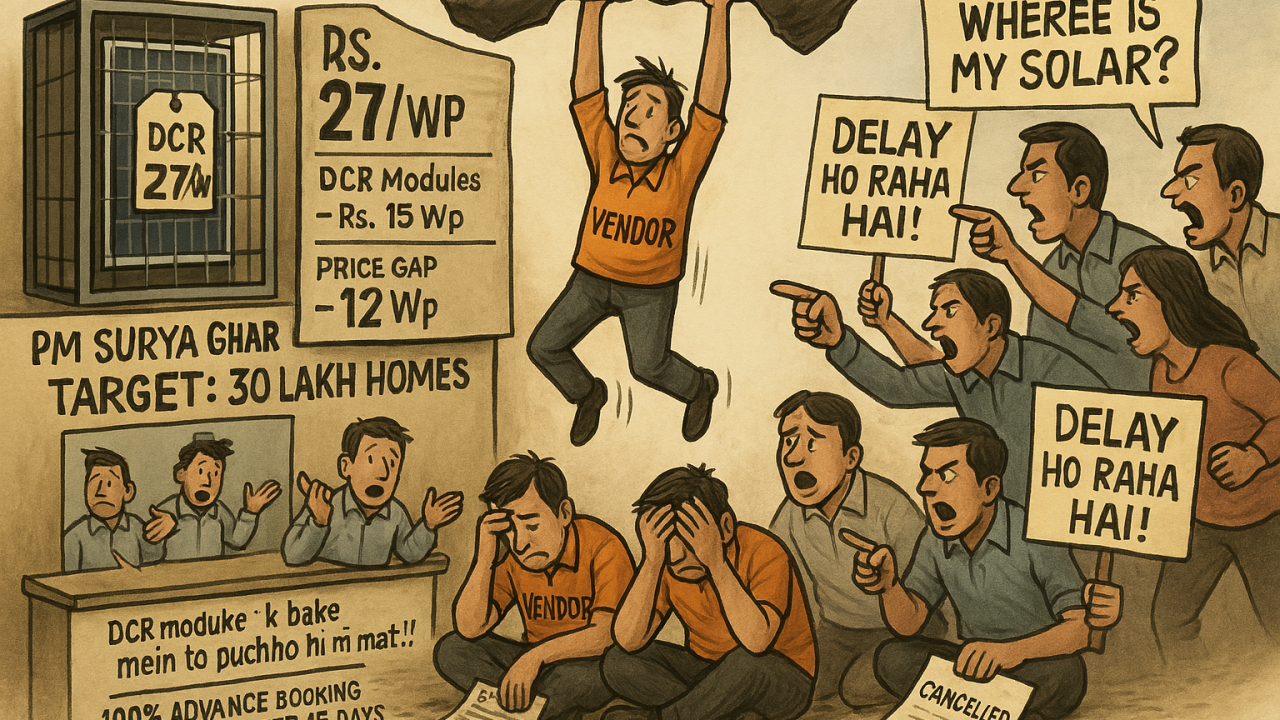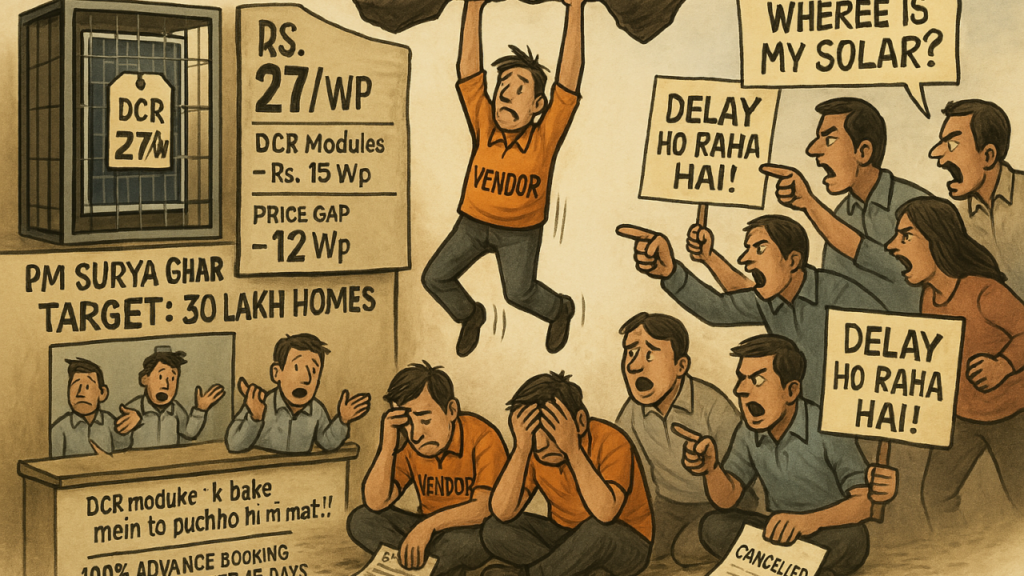/ Dec 19, 2025


The PM Surya Ghar Muft Bijli Yojana was launched as a visionary step to empower 1 crore households with free electricity through rooftop solar. While the intention is commendable, the implementation — especially the mandatory use of DCR (Domestic Content Requirement) modules — is proving to be counterproductive.
Instead of enabling affordable clean energy access, the scheme is becoming a vehicle for price inflation, artificial scarcity, and market distortion, where the real beneficiaries are a handful of domestic manufacturers — while consumers, small installers, and the ecosystem at large suffer.
To promote local manufacturing, the scheme mandates the use of DCR modules. But this one policy decision is causing massive disruptions:
Let’s break down the numbers.
📉 Total extra consumer cost over 3 years: ₹45,000+ Cr
At the same time, the government claims to be offering ₹60,000 Cr as a subsidy. But more than 75% of that is being pulled back indirectly through inflated module prices and taxes. The real “subsidy” is ending up in manufacturers’ pockets.
What’s worse — even if consumers and installers are ready to pay the higher price, DCR modules are simply not available. Reports from the ground include:
This scarcity benefits no one except large manufacturers with capacity and control over distribution.
This is not how a pro-consumer, pro-green energy policy should function. It’s time for the government to pause the current scheme, evaluate the ground realities, and make essential reforms.
India needs solar power — but not at the cost of fairness and accessibility. The PM Surya Ghar Yojana, in its current form, is deeply flawed. Instead of promoting clean energy, it is creating a closed market where consumers and small businesses are suffering.
Read more about Govt Approves Two New Payment Methods for Rooftop Solar Under PM Surya Ghar
It’s time for a course correction. Let’s build a rooftop solar ecosystem that is inclusive, efficient, and genuinely beneficial to the people it claims to serve.


The PM Surya Ghar Muft Bijli Yojana was launched as a visionary step to empower 1 crore households with free electricity through rooftop solar. While the intention is commendable, the implementation — especially the mandatory use of DCR (Domestic Content Requirement) modules — is proving to be counterproductive.
Instead of enabling affordable clean energy access, the scheme is becoming a vehicle for price inflation, artificial scarcity, and market distortion, where the real beneficiaries are a handful of domestic manufacturers — while consumers, small installers, and the ecosystem at large suffer.
To promote local manufacturing, the scheme mandates the use of DCR modules. But this one policy decision is causing massive disruptions:
Let’s break down the numbers.
📉 Total extra consumer cost over 3 years: ₹45,000+ Cr
At the same time, the government claims to be offering ₹60,000 Cr as a subsidy. But more than 75% of that is being pulled back indirectly through inflated module prices and taxes. The real “subsidy” is ending up in manufacturers’ pockets.
What’s worse — even if consumers and installers are ready to pay the higher price, DCR modules are simply not available. Reports from the ground include:
This scarcity benefits no one except large manufacturers with capacity and control over distribution.
This is not how a pro-consumer, pro-green energy policy should function. It’s time for the government to pause the current scheme, evaluate the ground realities, and make essential reforms.
India needs solar power — but not at the cost of fairness and accessibility. The PM Surya Ghar Yojana, in its current form, is deeply flawed. Instead of promoting clean energy, it is creating a closed market where consumers and small businesses are suffering.
Read more about Govt Approves Two New Payment Methods for Rooftop Solar Under PM Surya Ghar
It’s time for a course correction. Let’s build a rooftop solar ecosystem that is inclusive, efficient, and genuinely beneficial to the people it claims to serve.
Copyright Solar Journal Hub. 2025